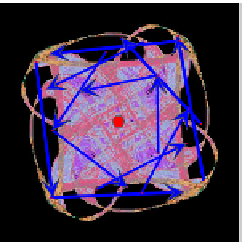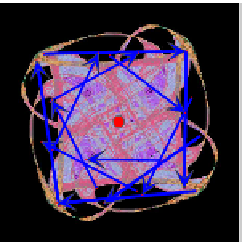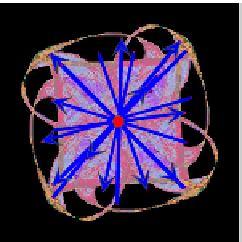Information Technology Reference
In-Depth Information
increasingly difficult. This allows us to exemplify the different aspects of the SSA,
as the simple examples point out the core of the SSA, and the more difficult ones
require the more elaborate components. In Section 5.2 we apply our scheme to the
BioID face database [Bio01]. This dataset consists of 1521 face images with ground
truth symmetry axes. This allows to asses the scheme's accuracy and compare it
to Loy and Eklundh [LE06], whose results are considered state-of-the-art. Last, we
detect symmetries in three-dimensional objects in Section 5.3.
5.1
Symmetry Analysis of Images
Figure 4 presents the analysis of a synthetic image with rotational symmetry of or-
der four. Applying Algorithm 1 produces the sets of corresponding eigenvalues and
eigenvectors
ψ
i
, respectively. The spectral gap in Fig. 4a is evident and allows
to estimate the order of symmetry. Note that the different self-alignments are man-
ifested by non-equal eigenvalues, despite the image being synthetic. We attribute
that to the imperfectness of the feature point detectors, detecting the feature points
at slightly different locations, and to the addition of noise to the feature points co-
ordinates. The transformation
T
C
1
, corresponding to the leading eigenvalue
λ
i
and
λ
1
,is
(a)
(b)
(c)
(d)
Fig. 4
Rotational symmetry.
(
a
)
Eigenvalues
λ
i
(
b
)
The rotation corresponding to
λ
2
(
c
)
The rotation corresponding to λ
3
(
d
)
The rotation corresponding to λ
4









Search WWH ::

Custom Search